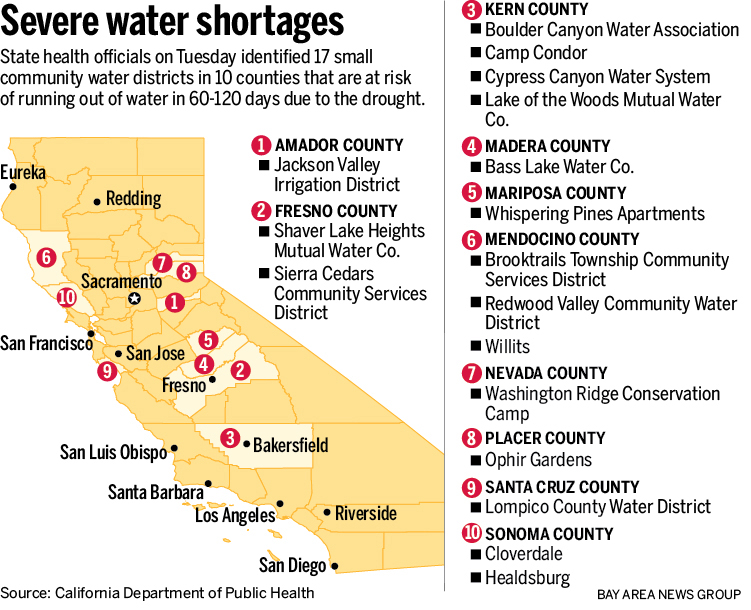
The scant amounts of rain and snow that finally infiltrated Northern California this week will put barely a dent in the ongoing drought. Now, 17 communities in California are at risk of running out of water within one to four months, according to the California Department of Public Health.
KQED Science managing editor and San Jose Mercury News reporter Paul Rogers described the problem in the Merc:
In some communities, wells are running dry. In others, reservoirs are nearly empty. Some have long-running problems that predate the drought.
The water systems, all in rural areas, serve from 39 to 11,000 residents. They range from the tiny Lompico County Water District in Santa Cruz County to districts that serve the cities of Healdsburg and Cloverdale in Sonoma County.
“These little districts with the small number of ratepayers don’t have a safety net,” Rogers told The California Report’s Scott Shafer. “Many of them were vulnerable to begin with.”
Unlike big urban water agencies such as the San Francisco Public Utilities Commission, Santa Clara Valley Water District and East Bay Municipal Utility District, smaller water districts don’t have the resources to build new reservoirs and manage water conservation programs.
And so while some of the large districts with water banked in big reservoirs are asking for voluntary cutbacks — 10 percent in San Francisco and the Peninsula, for instance, and 20 percent in Alameda County — Rogers said these 17 small districts will be looking at more drastic solutions: new pipelines, trucking in water, drilling new wells or bringing in mobile desalination plants.
